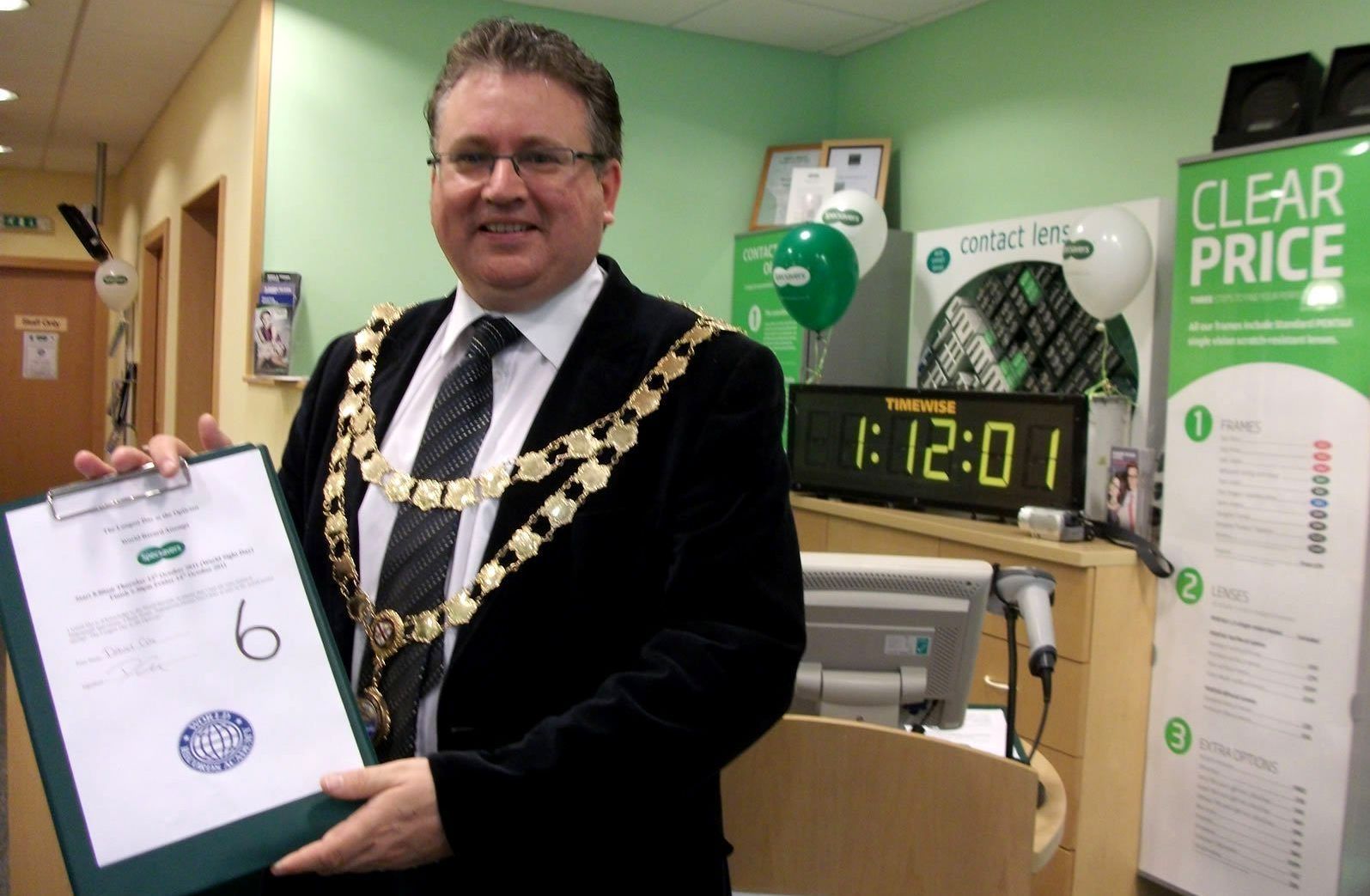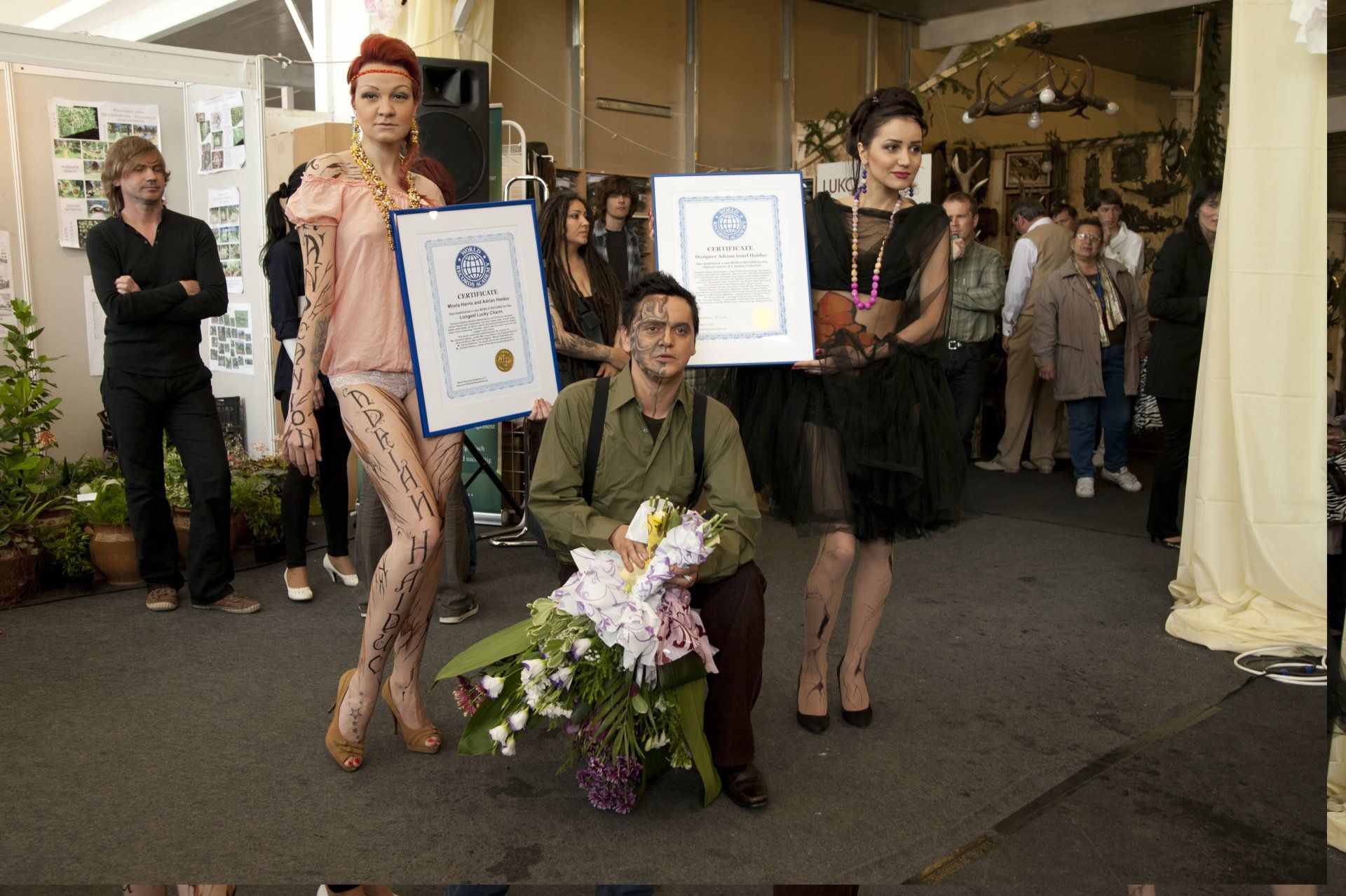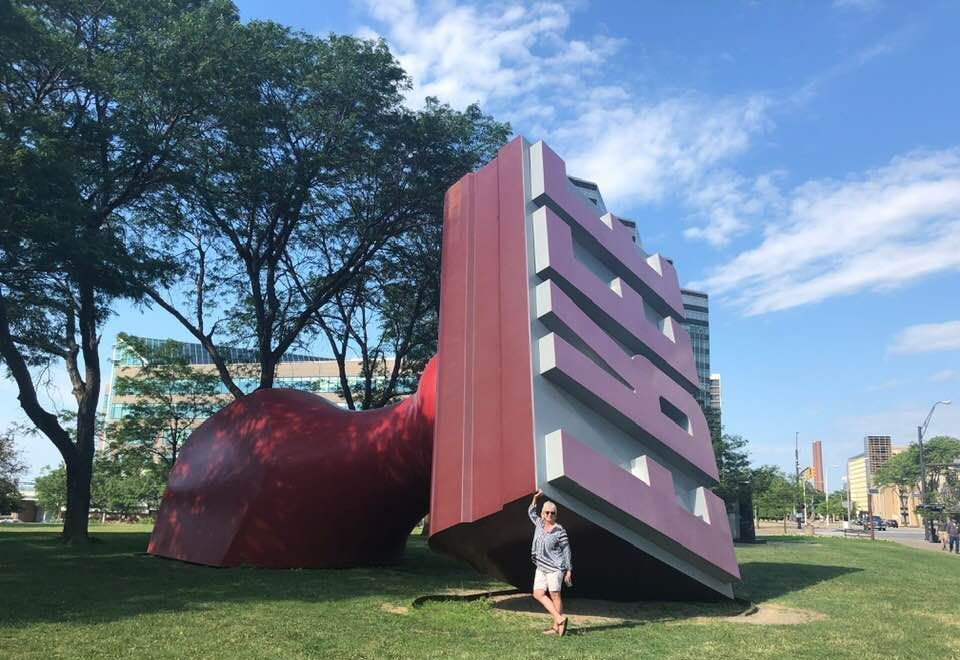World's First Sewing Machine, world record in Cambridge, Massachusetts
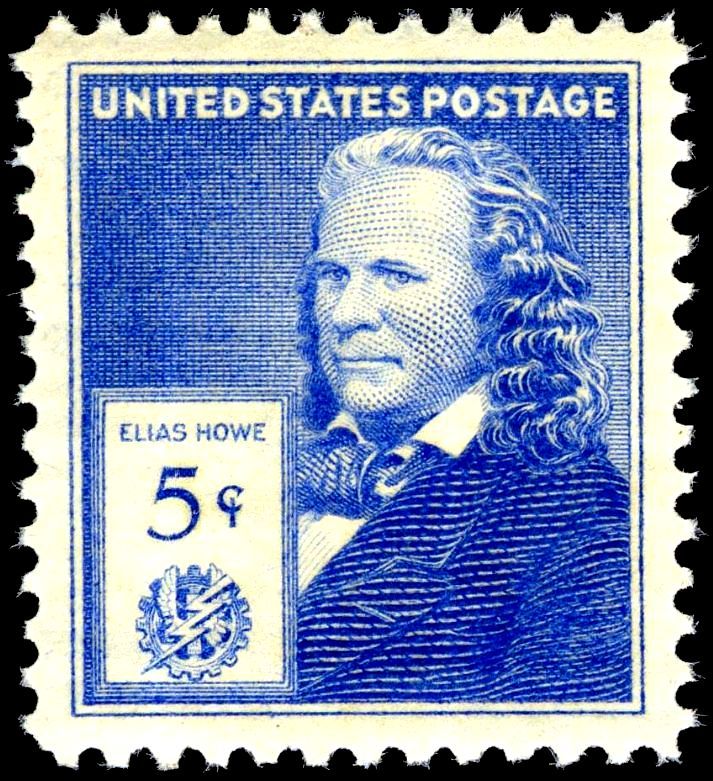
Cambridge, Massachusetts, United States--A machinist by trade who worked in a cotton factory in Lowell, Massachusetts, American inventor Elias Howe (July 9, 1819 - October 3,1867) earned a patent for the sewing machine, a tool which revolutionized the manufacture of clothing; he received the fifth United States patent (No. 4,750) for a sewing machine in 1846, thus setting the world record for inventing the World's First Sewing Machine, according to the WORLD RECORD ACADEMY.
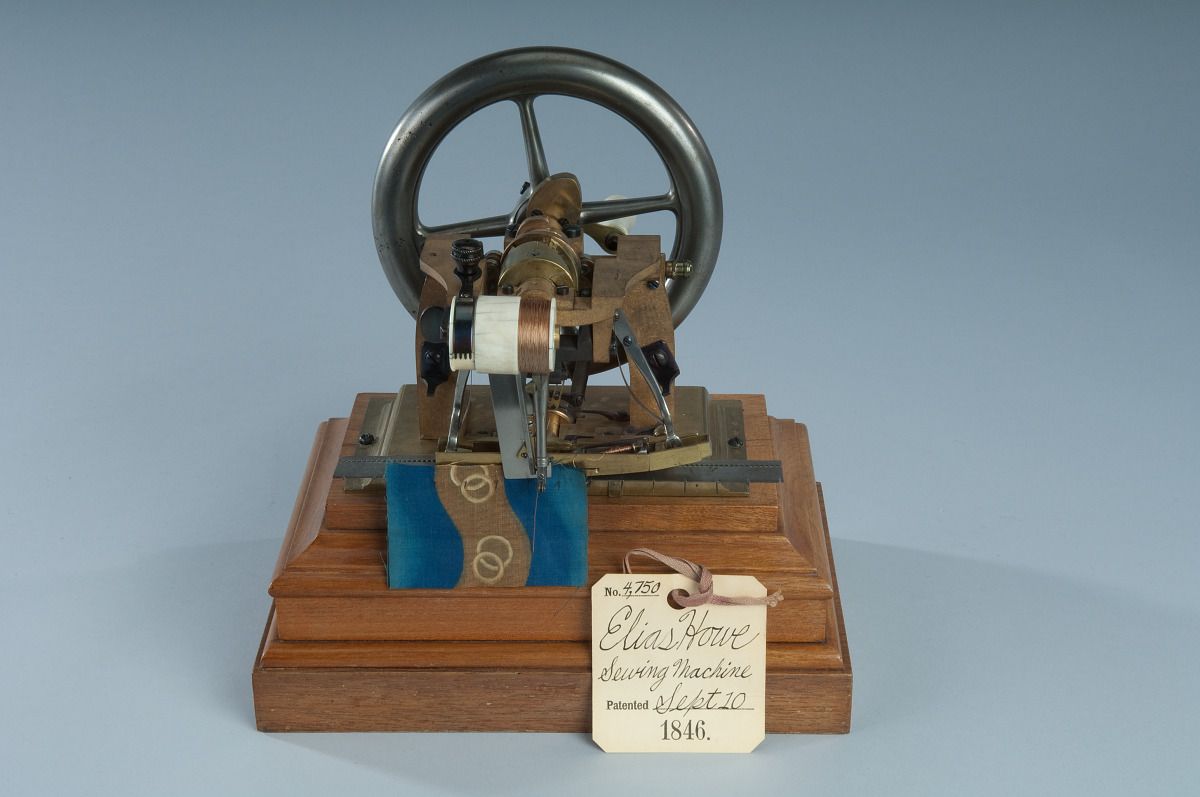
"While working as a journeyman machinist, Elias Howe Jr. wrestled for years to find a way to mechanize sewing. With the family pinched by poverty, his wife sewed for others by hand at home. Watching her sew, Howe visualized ways to mechanize the process. In 1845, he built his first sewing machine and soon constructed an improved model, which he carried to the Patent Office in Washington to apply for a patent. He received the fifth United States patent (No. 4,750) for a sewing machine in 1846.
"Howe’s model used a grooved and curved eye-pointed needle carried by a vibrating arm. The needle was provided with thread from a spool. Loops of thread from the needle were locked by a second thread carried by a shuttle, which moved through the loop by means of reciprocating drivers," the Smithsonian Institution says.
"The cloth hung vertically, impaled on pins on a metal baster plate. The baster plate moved intermittently under the needle by means of a toothed wheel. The length of each stitching operation depended upon the length of the baster plate, and only straight seams could be sewn. When the end of the baster plate reached the position of the needle, the sewing was stopped. The cloth was removed from the baster plate, and the plate was moved back to its original position. The cloth was repositioned on the pins and the process was repeated until the sewing was finished. This resulted in an imperfect way to sew, but it marked the beginning of successful mechanized sewing."
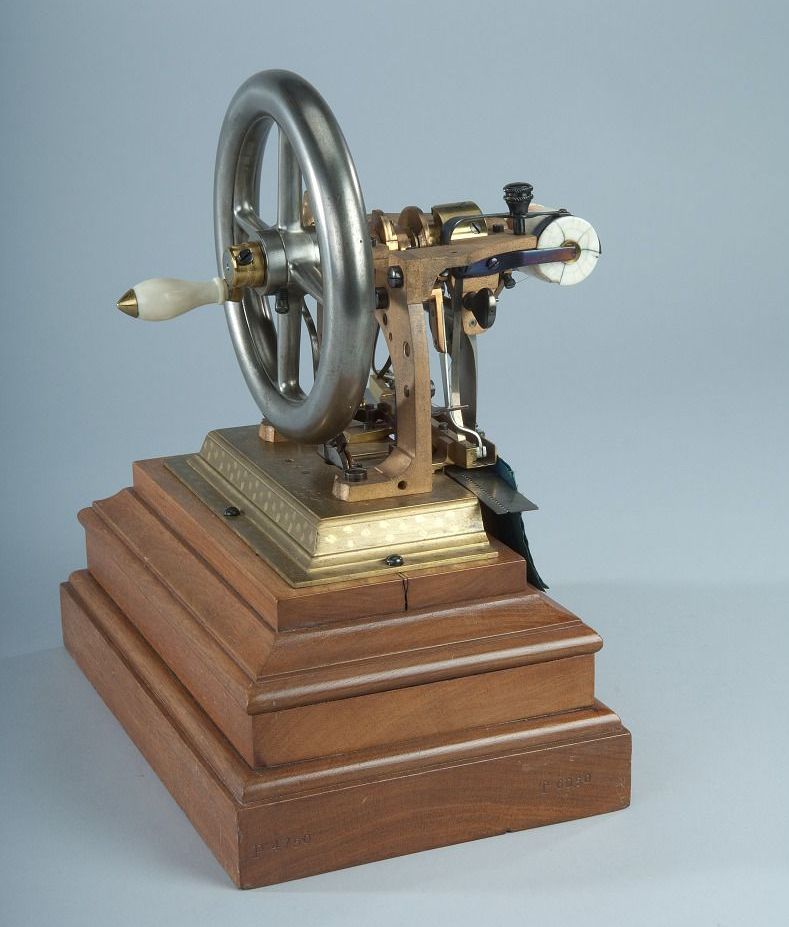
"Elias Howe, (born July 9, 1819, Spencer, Mass., U.S.—died Oct. 3, 1867, Brooklyn, N.Y.), American inventor whose sewing machine helped revolutionize garment manufacture in the factory and in the home," the
Britannica says.
"Interested in machinery since childhood, Howe learned the machinist trade and worked in a cotton machinery factory in Lowell, Mass., and later in Cambridge. During this time it was suggested to him that the man who invented a machine that could sew would earn a fortune.
"For five years Howe spent all his spare time in the development of a practical sewing machine, and in 1846 he was granted a patent for it. The machine attracted little attention in the United States at first, and, when a fortune was not forthcoming, Howe sold the patent rights in England for £250 ($1,250). He moved to England and worked for £5 a week to perfect his machine for use in sewing leather and similar materials."
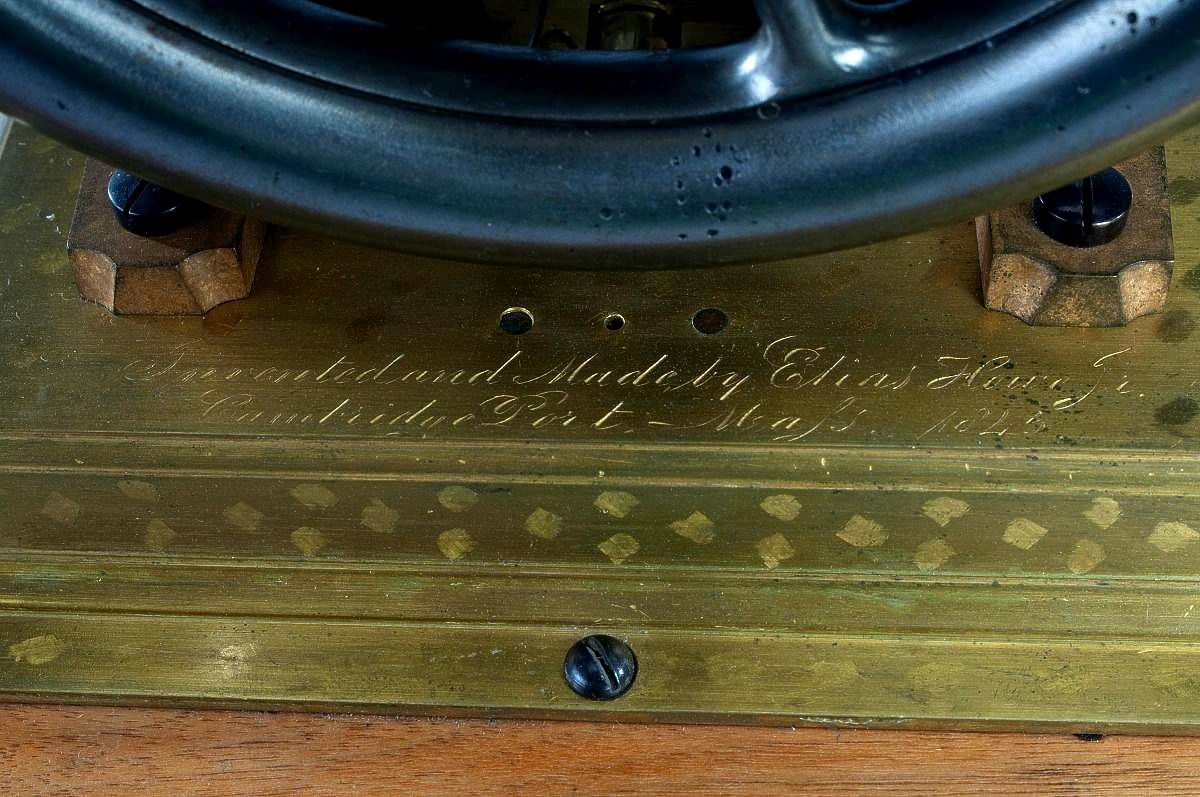
"Elias Howe's innovation, in addition to the mechanical improvements to his machine, was in putting together all of the work of his predecessors, and producing a sewing machine used around the globe. Through this he was able to gain fame and fortune as one of the great innovators of his era," the
Cambridge Historical Society says.
"There were additional factors in Howe's life which contributed to his interest in making a sewing machine. He was born with a physical disability--a type of a lameness--which increasingly made his work as a laborer more difficult and more painful. In 1843, when he was forced from work for a time due to his disability, his wife took up odd-job sewing to pay the family bills. Watching her work, he realized that the elusive sewing machine could solve all of his family's financial and physical difficulties and dedicated himself to the project.
"Within two years, by May 1845, Howe had a machine that was sewing seams. By July he finished his first two suits of wool clothes—one for George Fisher and one for himself. But to do more than his predecessors had been able to do, Howe had to interest the public in his machine. He put on a display, a race against five seamstresses, and his machine finished five entire seams before any of the seamstresses finished one. The crowds remained wary, however, and the protests of the local tailors proved effective—Howe did not receive a single order for his machine."
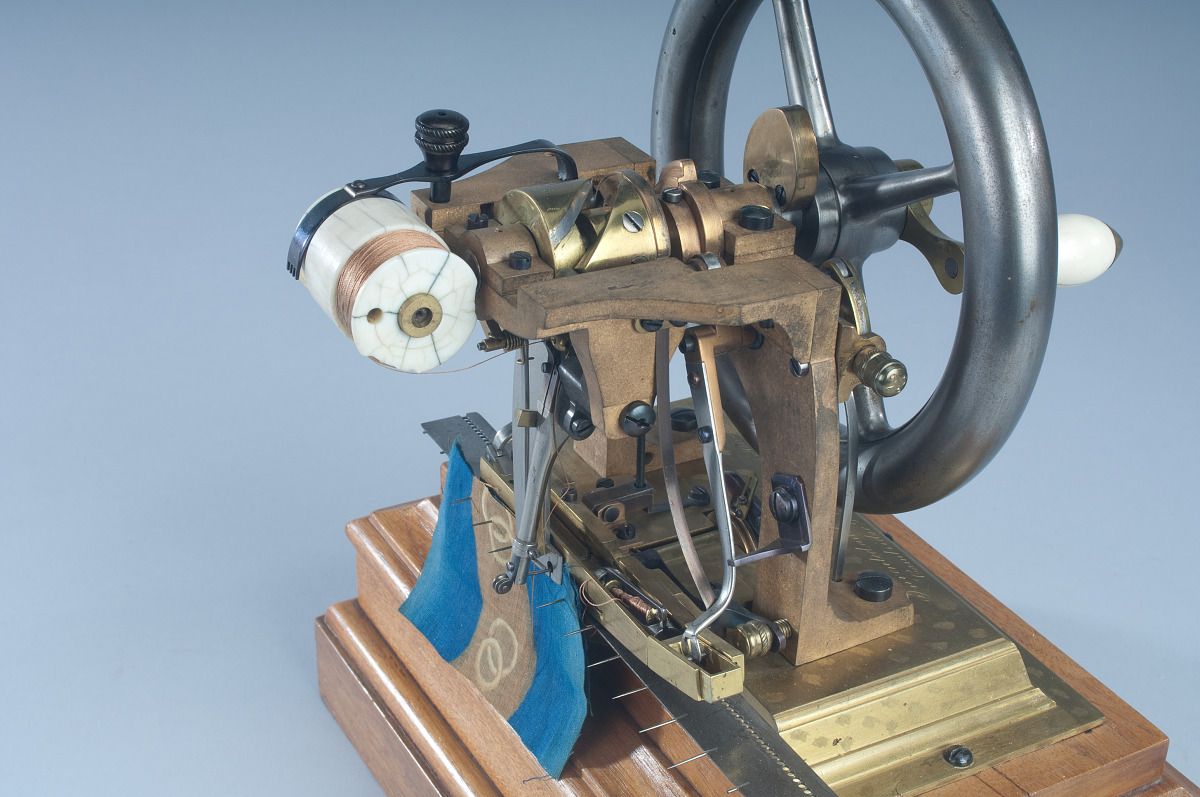
"Elias Howe patented the first ever lockstitch sewing machine in the world in 1846. His invention helped the mass production of sewing machines and clothing. That in turn revolutionized the sewing industry and freed women from some of the drudgery of daily life at the time,"
The American Society of Mechanical Engineers says.
"Howe's story is a brief but turbulent one. It was one that led to the birth of the first proper sewing machine industry, which triggered the greatest manufacturing expansion in history and led to the employment of millions, especially women in the developing world.
"One of the biggest beneficiaries of Howe's invention is Khan's native Bangladesh, a Muslim-majority country where women have suffered for generations due to lack of opportunities and proper education. The growth of the garment industry in the 20th century opened up opportunities in many developing countries around the world, and in particular for millions of Bangladeshi women, who now make up 90% of the country's workforce in this sector. The garment revolution not only liberated a vast population of illiterate women but also put the country ahead of many other Muslim countries as a model for the empowerment of women."
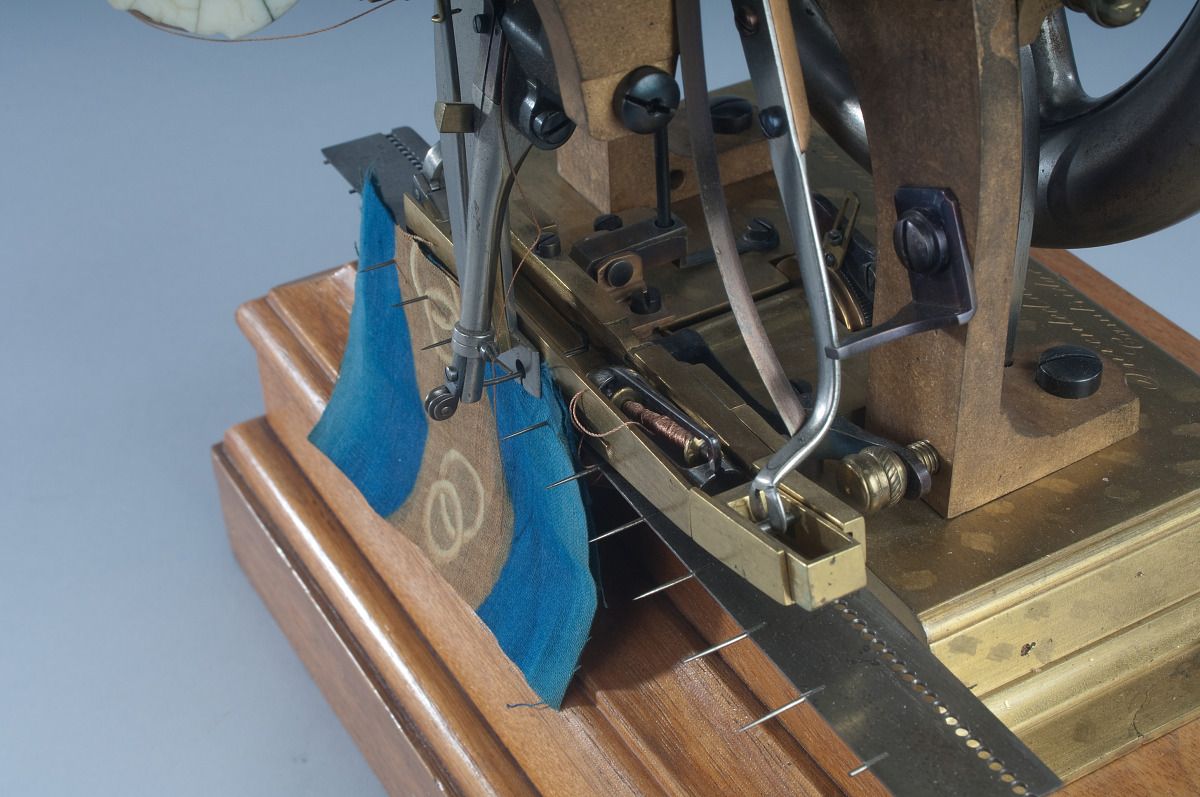
"Elias Howe invented the first practical sewing machine. Born in Spencer, Massachusetts, he spent his childhood and early adult years in Massachusetts. He became a skilled machinist, apprenticing in a textile factory and then for a master mechanic. By April 1845, Howe had created a practical sewing machine. In a public demonstration, Howe's invention proved to be five times faster than the swiftest hand sewers," the
National Inventors Hall of Fame says.
Howe was unsuccessful marketing his invention in the United States. In 1846, he went to England and he sold the British rights for the machine to William Thomas, a large manufacturer of corsets, shoes, and umbrellas.
"Upon his return to the U.S., Howe found that some manufacturers, including Isaac Singer, had already begun to make and sell sewing machines similar to his. A five-year legal battle ensued, lasting from 1849 to 1854. Finally his patent was declared basic and he was awarded a royalty on every machine that infringed his patent."
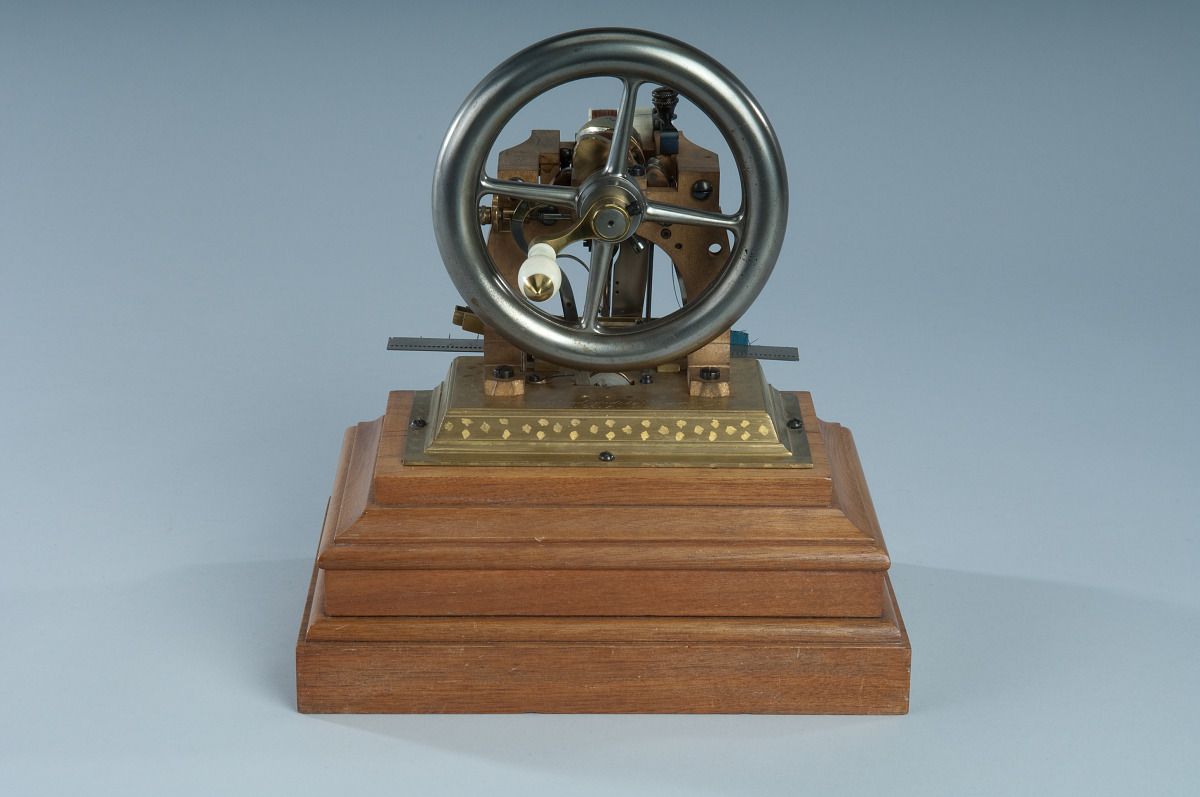
"Elias Howe Jr. ( July 9, 1819 – October 3, 1867) was an American inventor best known for his creation of the modern lockstitch sewing machine.
"Elias Howe Jr. was born on July 9, 1819, to Dr. Elias Howe Sr (1792–1867) and Polly (Bemis) Howe (1791–1871) in Spencer, Massachusetts. Howe spent his childhood and early adult years in Massachusetts, where he apprenticed in a textile factory in Lowell beginning in 1835. After mill closings due to the Panic of 1837, he moved to Cambridge, Massachusetts, to work as a mechanic with carding machinery, apprenticing along with his cousin Nathaniel P. Banks. In the beginning of 1838, he apprenticed in the shop of Ari Davis, a master mechanic in Cambridge who specialized in the manufacture and repair of chronometers and other precision instruments. It was in the employ of Davis that Howe seized upon the idea of the sewing machine.
"Despite his efforts to sell his machine, other entrepreneurs began manufacturing sewing machines. Howe was forced to defend his patent in a court case that lasted from 1849 to 1854 because he found that Isaac Singer with cooperation from Walter Hunt had perfected a facsimile of his machine and was selling it with the same lockstitch that Howe had invented and patented. He won the dispute and earned considerable royalties from Singer and others for sales of his invention." (Wikipedia)
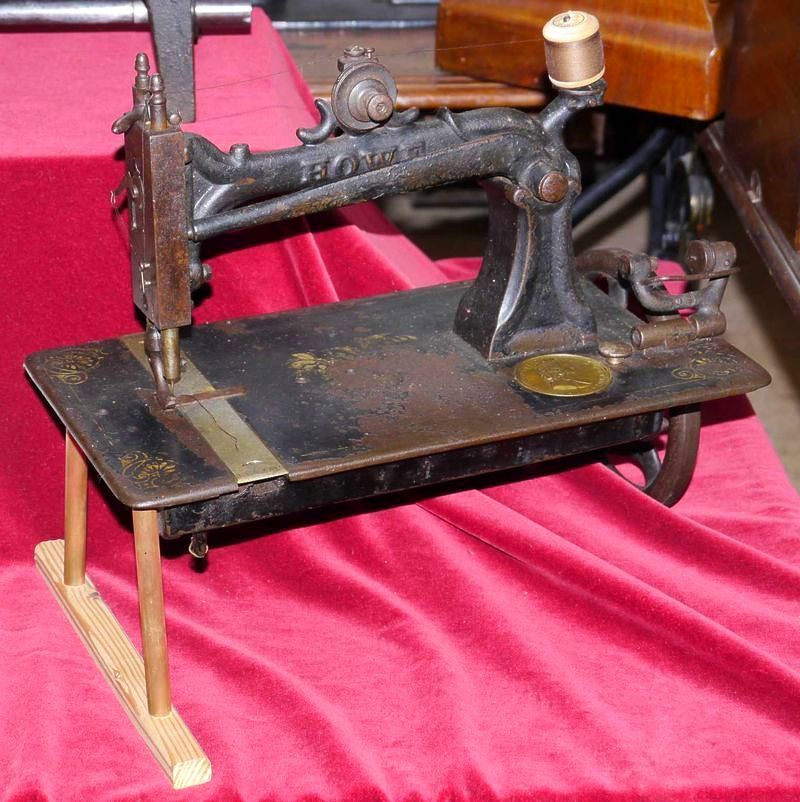
"After failing to build a machine that reproduced his wife’s hand motions, Howe scrapped the design and started again; this time, he inadvertently invented a hand-cranked machine almost identical to Hunt’s," the Smithsonian Magazine says.
"He earned a patent for his design in 1846 and staged a man-vs-machine challenge, beating five seamstresses with work that was faster and in every way superior. Yet the machine was still seen as somewhat scandalous, and Howe failed to attract any buyers or investors. Undeterred, he continued to improve his machine.
"Soon after the conclusion of his last court case, Howe was approached with a unique offer. An machinist by the name of Isaac Singer had invented his own sewing machine that was different in almost every way than Howe’s; every way except one – its eye-pointed needle. That little needle cost Singer thousands of dollars in royalties, all paid to Howe, but inspired the country’s first patent pool."
"Here crops up an old Spencer friend, George Fisher. He was a schoolmate. Now he was a small coal and wood dealer in Cambridge," the Cambridge Historical Society says.
"But in December, 1844, Fisher asked Howe with his family into his own house, and let him put his lathe under the slanting eaves in the garret. Besides, he loaned his old Spencer schoolmate $500 for which he would receive one half interest in the patent, if successful.
"He was one of the unknown soldiers of invention, the romance of whose chivalry was equal to that of the Yale friend who financed, and at the cost of his life saved, Eli Whitney. “I was the only one of his neighbors and friends in Cambridge that had any confidence in the success of the invention,” Fisher declared."
"On September 9th, 1846, American inventor Elias Howe (July 9, 1819 - October 3,1867) earned a patent for the sewing machine, a tool which revolutionized the manufacture of clothing," the Teachers College, Columbia University says.
"A machinist by trade who worked in a cotton factory in Lowell, Massachusetts, Howe sold his rights in England for but a small amount, a mere 250 pounds sterling, and then moved there, leaving his family behind, to continue perfecting his invention for use on special fabrics, like leather and silk.
"When he returned to the United States, he discovered development in the industry: many sewing machines, including those made by I. M. Singer and Company, were being used in homes and factories on numerous fabrics -- effectively violating his patent and leading to years of litigation. Howe's rights were established in 1854, and he began receiving royalties on all sewing machines made in the the United States, though he spent years in poverty pursuing his dream to earn a fortune."
"For almost a year, Howe, working evenings, tried to make a machine which would imitate the motions of his wife's hands, when sewing, and make a stitch such as she made. Every attempt to do this failed," the Heritage History says.
"One evening in the autumn of 1844, Howe sat brooding over his last attempt when there flashed into his mind this question: "Could there be another stitch which would do just as well as the stitch made by hand?" This question set Howe on a new track. He was familiar with the chain or crochet stitch, from long watching his wife sew. From working in machine shops, he also knew about shuttles and looms.
"It was easy enough to see how to make a machine to sew such stitches. But Howe had no money to buy the materials, and no money to support his family while making the model, which, if it was to be successful, must be made with as much care as a clock."
Photos: World's First Sewing Machine, world record in Cambridge, Massachusetts
(1) US stamp honoring Elias Howe/USPS/Wikimedia
(2,3,4,5,6,7) National Museum of American History
